Mitochondrial proteome landscape unveils key insights into melanoma severity and treatment strategies
- PMID: 40545870
- PMCID: PMC12183497
- DOI: 10.1002/cncr.35897
Mitochondrial proteome landscape unveils key insights into melanoma severity and treatment strategies
Abstract
Background: Melanoma, the deadliest form of skin cancer, exhibits resistance to conventional therapies, particularly in advanced and metastatic stages. Mitochondrial pathways, including oxidative phosphorylation and mitochondrial translation, have emerged as critical drivers of melanoma progression and therapy resistance. This study investigates the mitochondrial proteome in melanoma to uncover novel therapeutic vulnerabilities.
Methods: Quantitative proteomics was performed on 151 melanoma-related samples from a prospective cohort and postmortem tissues. Differential expression analysis identified mitochondrial proteins linked to disease aggression and treatment resistance. Functional enrichment analyses and in vitro validation using mitochondrial inhibitors were conducted to evaluate therapeutic potential.
Results: Mitochondrial translation and oxidative phosphorylation (OXPHOS) were significantly upregulated in aggressive melanomas, particularly in BRAF-mutant and metastatic tumors. Inhibition of mitochondrial pathways using antibiotics (doxycycline, tigecycline, and azithromycin) and OXPHOS inhibitors (VLX600, IACS-010759, and BAY 87-2243) demonstrated dose-dependent antiproliferative effects in melanoma cell lines, sparing noncancerous melanocytes. These treatments disrupted mitochondrial function, suppressed key metabolic pathways, and induced apoptosis, highlighting the clinical relevance of targeting these pathways.
Conclusions: This study reveals mitochondrial pathways as critical drivers of melanoma progression and resistance, providing a rationale for targeting mitochondrial translation and OXPHOS in advanced melanoma. Combining mitochondrial inhibitors with existing therapies could overcome treatment resistance and improve patient outcomes.
Keywords: BRAF mutation; MCM complex; melanoma; mitochondrial metabolism; mitochondrial proteome; mitoribosomes; oxidative phosphorylation; proteomics.
© 2025 The Author(s). Cancer published by Wiley Periodicals LLC on behalf of American Cancer Society.
Conflict of interest statement
Fábio C. S. Nogueira reports grant and/or contract funding from Fundação Carlos Chagas Filho de Amparo à Pesquisa do Estado do Rio de Janeiro. Jéssica Guedes reports fees for professional activities from Lund University. The other authors declare no conflicts of interest.
Figures
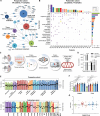
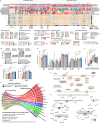
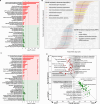
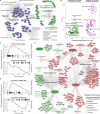
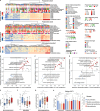

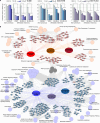
Similar articles
-
Exploiting mitochondrial dysfunction to overcome BRAF inhibitor resistance in advanced melanoma: the role of disulfiram as a copper ionophore.Cell Death Dis. 2025 Jul 1;16(1):482. doi: 10.1038/s41419-025-07766-y. Cell Death Dis. 2025. PMID: 40592836 Free PMC article.
-
Mitogen-activated protein kinase (MEK) inhibitors to treat melanoma alone or in combination with other kinase inhibitors.Expert Opin Drug Metab Toxicol. 2018 Mar;14(3):317-330. doi: 10.1080/17425255.2018.1432593. Epub 2018 Jan 30. Expert Opin Drug Metab Toxicol. 2018. PMID: 29363351
-
Mutational activation of BRAF confers sensitivity to transforming growth factor beta inhibitors in human cancer cells.Oncotarget. 2016 Dec 13;7(50):81995-82012. doi: 10.18632/oncotarget.13226. Oncotarget. 2016. PMID: 27835901 Free PMC article.
-
Protein phosphatase 6 activates NF-κB to confer sensitivity to MAPK pathway inhibitors in KRAS- and BRAF-mutant cancer cells.Sci Signal. 2024 May 14;17(836):eadd5073. doi: 10.1126/scisignal.add5073. Epub 2024 May 14. Sci Signal. 2024. PMID: 38743809 Free PMC article.
-
Cost-effectiveness of using prognostic information to select women with breast cancer for adjuvant systemic therapy.Health Technol Assess. 2006 Sep;10(34):iii-iv, ix-xi, 1-204. doi: 10.3310/hta10340. Health Technol Assess. 2006. PMID: 16959170
References
MeSH terms
Substances
Grants and funding
LinkOut - more resources
Full Text Sources
Medical
Research Materials

